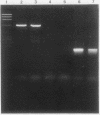Abstract
A practical protocol using the polymerase chain reaction (PCR) was designed for detecting Chlamydia trachomatis in clinical samples. DNA was extracted from material collected on urethral swabs and used as substrate for the PCR. The target was a 600 basepair DNA segment of the multicopy plasmid that is common to all strains of the bacterium. Negative samples were checked for loss of DNA or presence of polymerase inhibitors by a second PCR, targeted to a conserved segment of the human genome. The whole procedure was tested on 216 men with non-gonococcal urethritis (NGU). All patients were independently assessed by tissue culture isolation (60 positive samples) and a commercial immunoenzymatic assay. The PCR protocol, while sufficiently simple for routine application, was reliable and, for the diagnosis of urethritis, at least as good as tissue culture isolation.
Full text
PDF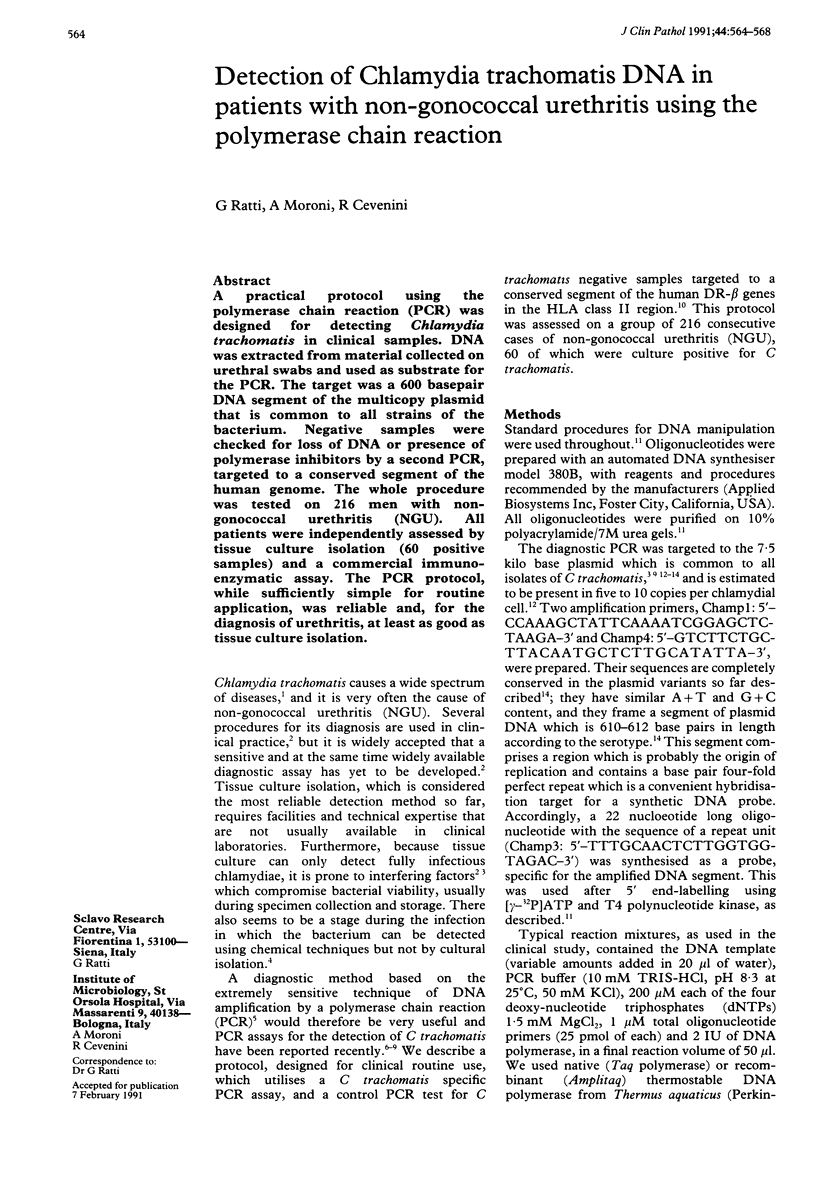
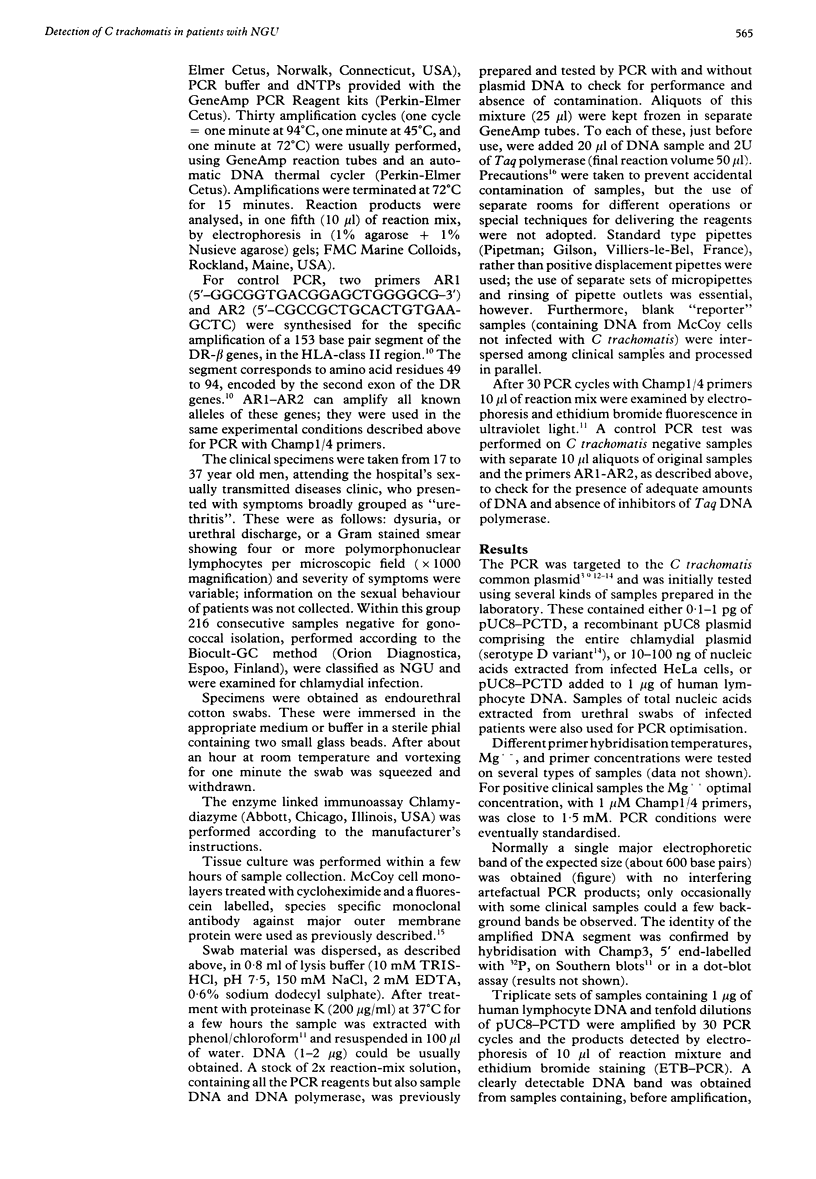
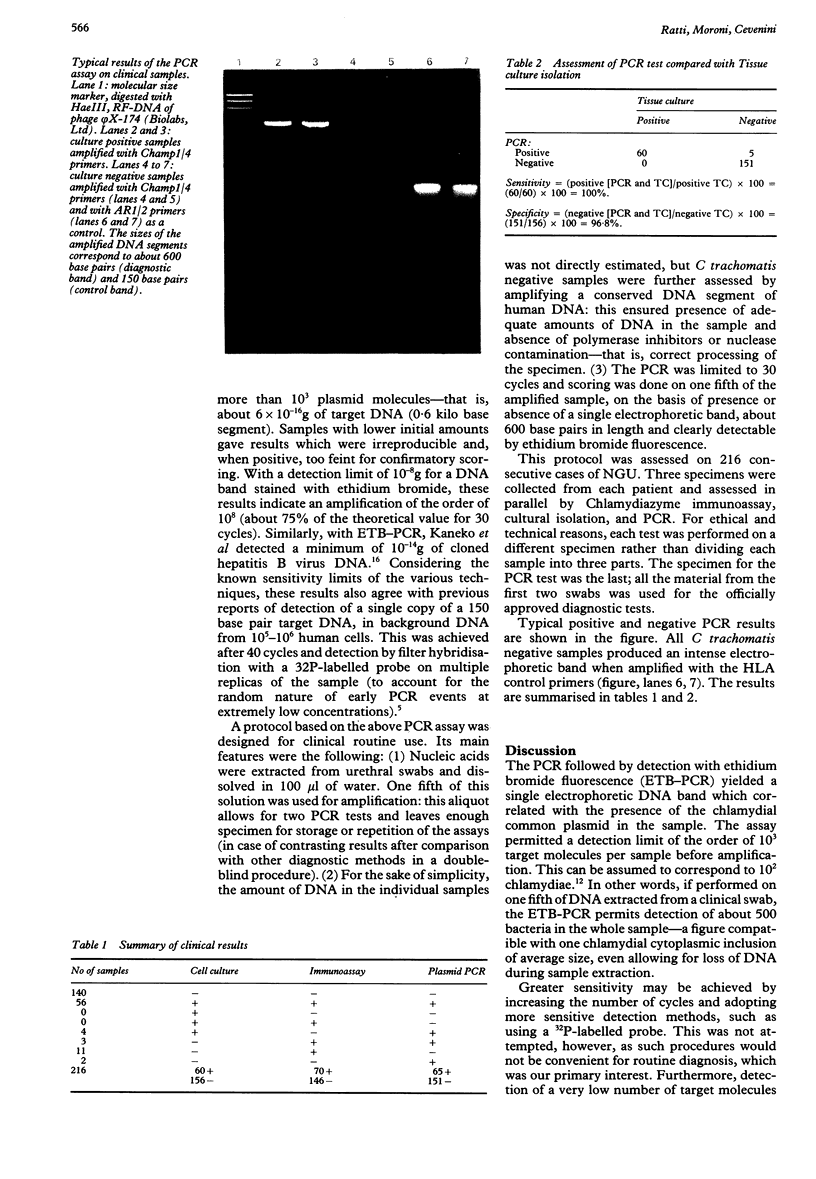
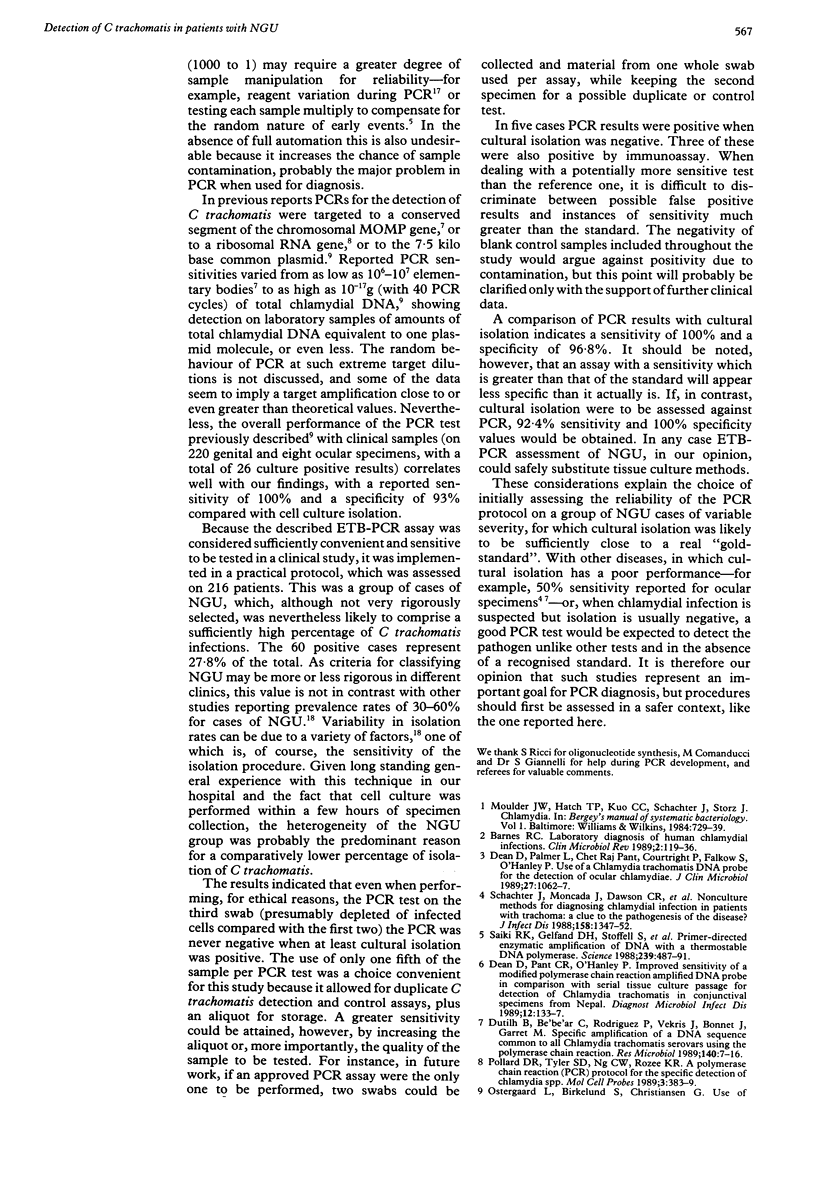

Images in this article
Selected References
These references are in PubMed. This may not be the complete list of references from this article.
- Ambrosino D. M., Landesman S. H., Gorham C. C., Siber G. R. Passive immunization against disease due to Haemophilus influenzae type b: concentrations of antibody to capsular polysaccharide in high-risk children. J Infect Dis. 1986 Jan;153(1):1–7. doi: 10.1093/infdis/153.1.1. [DOI] [PubMed] [Google Scholar]
- Barnes R. C. Laboratory diagnosis of human chlamydial infections. Clin Microbiol Rev. 1989 Apr;2(2):119–136. doi: 10.1128/cmr.2.2.119. [DOI] [PMC free article] [PubMed] [Google Scholar]
- Bell J. I., Denney D., Jr, Foster L., Belt T., Todd J. A., McDevitt H. O. Allelic variation in the DR subregion of the human major histocompatibility complex. Proc Natl Acad Sci U S A. 1987 Sep;84(17):6234–6238. doi: 10.1073/pnas.84.17.6234. [DOI] [PMC free article] [PubMed] [Google Scholar]
- Comanducci M., Ricci S., Cevenini R., Ratti G. Diversity of the Chlamydia trachomatis common plasmid in biovars with different pathogenicity. Plasmid. 1990 Mar;23(2):149–154. doi: 10.1016/0147-619x(90)90034-a. [DOI] [PubMed] [Google Scholar]
- Dean D., Palmer L., Pant C. R., Courtright P., Falkow S., O'Hanley P. Use of a Chlamydia trachomatis DNA probe for detection of ocular chlamydiae. J Clin Microbiol. 1989 May;27(5):1062–1067. doi: 10.1128/jcm.27.5.1062-1067.1989. [DOI] [PMC free article] [PubMed] [Google Scholar]
- Dean D., Pant C. R., O'Hanley P. Improved sensitivity of a modified polymerase chain reaction amplified DNA probe in comparison with serial tissue culture passage for detection of Chlamydia trachomatis in conjunctival specimens from nepal. Diagn Microbiol Infect Dis. 1989 Mar-Apr;12(2):133–137. doi: 10.1016/0732-8893(89)90003-5. [DOI] [PubMed] [Google Scholar]
- Dutilh B., Bébéar C., Rodriguez P., Vekris A., Bonnet J., Garret M. Specific amplification of a DNA sequence common to all Chlamydia trachomatis serovars using the polymerase chain reaction. Res Microbiol. 1989 Jan;140(1):7–16. doi: 10.1016/0923-2508(89)90053-3. [DOI] [PubMed] [Google Scholar]
- Kaneko S., Miller R. H., Feinstone S. M., Unoura M., Kobayashi K., Hattori N., Purcell R. H. Detection of serum hepatitis B virus DNA in patients with chronic hepatitis using the polymerase chain reaction assay. Proc Natl Acad Sci U S A. 1989 Jan;86(1):312–316. doi: 10.1073/pnas.86.1.312. [DOI] [PMC free article] [PubMed] [Google Scholar]
- Ostergaard L., Birkelund S., Christiansen G. Use of polymerase chain reaction for detection of Chlamydia trachomatis. J Clin Microbiol. 1990 Jun;28(6):1254–1260. doi: 10.1128/jcm.28.6.1254-1260.1990. [DOI] [PMC free article] [PubMed] [Google Scholar]
- Pollard D. R., Tyler S. D., Ng C. W., Rozee K. R. A polymerase chain reaction (PCR) protocol for the specific detection of Chlamydia spp. Mol Cell Probes. 1989 Dec;3(4):383–389. doi: 10.1016/0890-8508(89)90017-0. [DOI] [PubMed] [Google Scholar]
- Ruano G., Fenton W., Kidd K. K. Biphasic amplification of very dilute DNA samples via 'booster' PCR. Nucleic Acids Res. 1989 Jul 11;17(13):5407–5407. doi: 10.1093/nar/17.13.5407. [DOI] [PMC free article] [PubMed] [Google Scholar]
- Saiki R. K., Gelfand D. H., Stoffel S., Scharf S. J., Higuchi R., Horn G. T., Mullis K. B., Erlich H. A. Primer-directed enzymatic amplification of DNA with a thermostable DNA polymerase. Science. 1988 Jan 29;239(4839):487–491. doi: 10.1126/science.2448875. [DOI] [PubMed] [Google Scholar]
- Schachter J., Moncada J., Dawson C. R., Sheppard J., Courtright P., Said M. E., Zaki S., Hafez S. F., Lorincz A. Nonculture methods for diagnosing chlamydial infection in patients with trachoma: a clue to the pathogenesis of the disease? J Infect Dis. 1988 Dec;158(6):1347–1352. doi: 10.1093/infdis/158.6.1347. [DOI] [PubMed] [Google Scholar]



